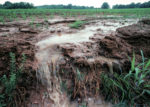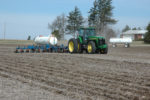Advertise Follow Us
Soil Health
Editorial Viewpoint
Our editors hear amazing stories from no-tillers every day, but not every quote or anecdote makes it into print for one reason or another. Here, we chronicle a handful of tales from our encounters that have made a lasting impression.
Read More
No-Till's Historical Highlights (Through 2021)
With more than 75 new updates, this historical record identifies what built no-till into a profitable farming practice now embraced on 110 million U.S. acres.
Read More
Two Roads to Farming’s Future: What to Choose?
Veteran ag economist John Ikerd says U.S. agriculture may need to look at a more integrated approach to the challenges it faces with growing public concern over environmental and social issues.
Read More
[Podcast] The Impact of Water, Tillage and Cover Crops on Soil Health
For this No-Till Farmer podcast, brought to you by Yetter Farm Equipment, we caught up with Anthony Bly, Soils Field Specialist with South Dakota State University Extension. In an interview with associate editor Sarah Hill, Anthony discusses the interconnected relationship between water and soil, how cover crops fit into profitable cropping systems, the importance of minimal soil disturbance and more.
Read More
Digital Demonstration Replay








